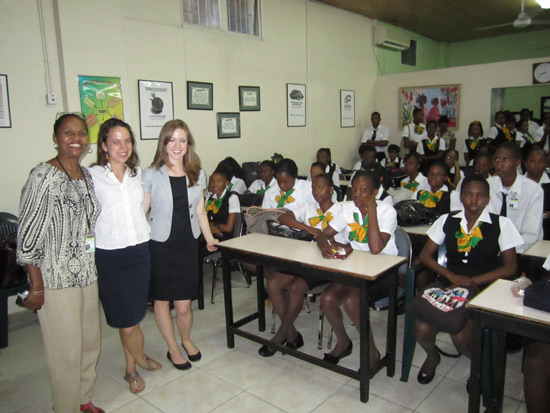What is happening to Jamaica’s missing youth?
2,000-3,000 Jamaican youth have gone missing in Jamaica. Field leaders we met this week described the profiles of missing children that plastered the recent nightly news reports as teens around 14 years old from low income neighborhoods–a major concern for those in the anti-trafficking field.
During our visit to Jamaica, we met with partners and leaders of the National Taskforce Against Trafficking. Members present at our meetings in Kingston, Jamaica’s capital, agreed that more needs to be done to investigate the connection between the missing children and human trafficking. Some studies have suggested at least one in five of these children could be victims of human trafficking–a huge number for a country whose total population is 2.8million–and some indicated the number could be greater.
More research is a desired deliverable for the Trafficking taskforce, as there has been little research published since 2007, the same year Shared Hope International released the DEMAND report, a profile of sex trafficking in Jamaica, the Netherlands, Japan and the U.S. Other goals of 2012 include a more robust public awareness effort and communications plan, more residential services for victims, and quarterly meetings with NGOs.

The taskforce’s plan to increase NGO involvement was welcome news to our partners on the ground in Jamaica. They work directly with young Jamaicans who have been or are at risk of being victimized by human trafficking, and welcome the opportunity to inform the Ministry of Justice led taskforce of the challenges and trends they are seeing on the ground. The meeting also provided great insight to Shared Hope’s understanding of the current issues our partners face.
During our visit we also had the privilege to view a video preview of the acclaimed new production by Kevin, “Nana Moses,” Calvert, “Where’s Melissa?”. The performance, based on information received from Shared Hope partners, uses Jamaican proverbs and music to tell the story of a young girl lured into sex slavery. Producers of the musical stage performance hope to perform in schools across Jamaica, and eventually other countries. This engaging production is a great introduction to the issue of sex trafficking–especially in Jamaica where people are hesitant to believe the problem exists.
Stay tuned for our next update as we head to Negril, one of Jamaica’s most popular tourist destinations and home to our other Jamaican partner who provides services to vulnerable Jamaican teens who are often victimized by the demand for commercial sex that unfortunately thrives in these “all-inclusive” travel destinations.







Jose says
more aware of the need for action rainrdgeg this form of modern slavery. You can show people this infograph and get the conversation started. We can determine to fight slavery by endorsing the use of Fair